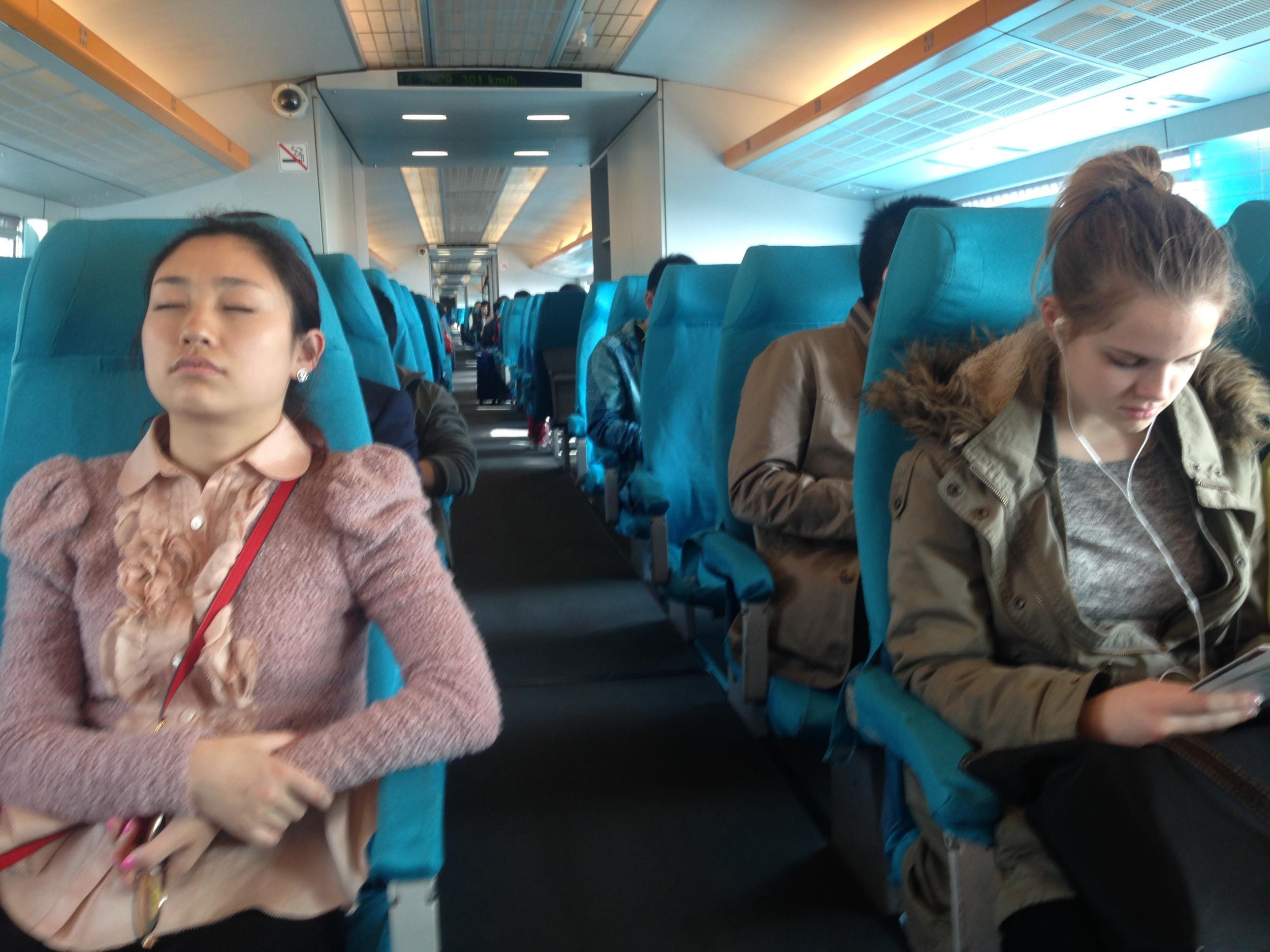Chasing the four-mile minute - and why time isn’t always on the side of supertrain-spotters
The man who pays his way

Much about the fastest railway on the planet is odd.
To see how blurry the outside world looks at nearly four times the motorway speed limit in Britain, fly to Shanghai. The Maglev link runs from the Chinese city’s main international airport, Pudong. It is a magnetic levitation line that reduces friction by suspending carriages just above the track. That enables the train to run at 267mph, covering over four miles in a minute.
Yet the elevated line doesn’t even go to the centre of Shanghai. It stops about four miles short beside a suburban Metro station called Longyang Road. It’s the equivalent of the Heathrow Express ending its journey from the airport at Ealing Broadway, obliging luggage-burdened passengers to change to the London Underground. And the line from somewhere to nowhere is only 19 miles long. It’s frankly weird to offer astonishingly fast trains on a track so short that the time saved compared with a conventional train is negligible. And the speed of Mach 0.35 (more than one third the speed of sound at sea level) can be attained only briefly before the slowdown begins.
Well, so I’ve heard.
I’ve travelled on the Maglev, but only at 186mph. That might sound churlish, but for the last few decades I could do three miles a minute any day of the week, strikers permitting, on a French TGV. I wanted to get closer to experiencing what life is like inside a Large Hadron Collider, when time outside appears to slows down.
But because of something else really odd about the Maglev, I missed the chance. Drivers put the train fully through its paces only a dozen times a day in each direction: the first eight trains after 9am, and then the first four after 3pm. For the rest of the day it behaves like an ordinary high-speed train. So you have to time your touchdown carefully. Of the 24 flights a week to Shanghai, only the Virgin Atlantic departure each afternoon from Heathrow delivers the supertrain-spotter to Pudong airport at the right time to connect to the railway rocket: 9.25am.
What could possibly go wrong? Well, the Chinese airport is right next to the East China Sea, and sometimes the morning fog rolls in. So it proved for flight VS250. At about the time the Boeing 787 should have begun its descent, the captain turned the plane around and headed for Nanjing, about half-an-hour away. Unfortunately by the time we got close Nanjing had decided it had quite enough diversions for one morning – and the pilots set a course for Beijing, 700 miles back the way we had come.
A miserable experience for the crew, who had just worked through the night to get everyone safely to China, and were now heading for the capital – where Virgin has neither representation nor a ground handler. Down the back of the plane, it wasn’t exactly party time either.
We landed at Beijing and were directed to a remote stand, where we waited for another 80 minutes for refuelling before the two-hour flight to Shanghai. The crew were very close to reaching their maximum hours, which would have made things very messy – with a plane and pilots in one city, and a couple of hundred passengers in another hoping to get home. Fortunately we made it to Shanghai, after the longest time I have ever been incarcerated in a plane: 16 hours. But by then I had comprehensively missed the morning’s turn of speed for the Maglev.
I could have waited another hour for the afternoon high-velocity performance to begin, but my first day’s plans for Shanghai were already in tatters. So I settled for the 186mph version. I discovered one more odd thing about the Maglev: it drops you beside a suburban shopping centre with no clues about how to find the Metro station. To go back to the Ealing Broadway analogy, it's as though someone has removed all the signs showing the way from the trains to the Tube.
Looking back, it all seems a blur – but one induced by jet fatigue rather than than a hyperfast hover.
Join our commenting forum
Join thought-provoking conversations, follow other Independent readers and see their replies
Comments